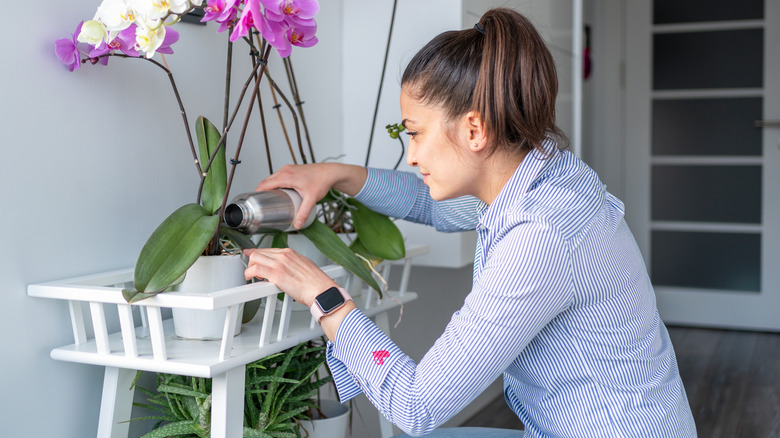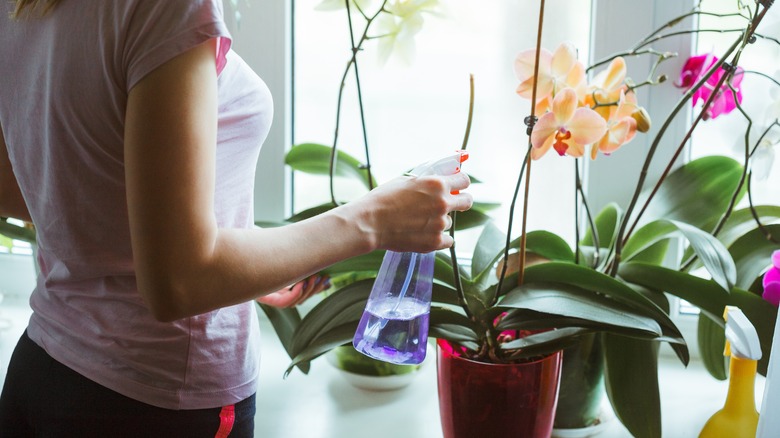Orchids have a fascinating life cycle, from the germination of a tiny, dust-like seed to a full-grown plant that produces breathtaking blooms. They are known for their impressive lifespan, which extends well beyond what most people expect from a typical houseplant. As an orchid owner, you may wonder how long your plant will live. It’s surprising but true — some orchids can last for decades. However, to help your orchid live a long and healthy life, you need to know its specific needs and take good care of it. Remember, every type of orchid is different, and understanding these differences is key to helping your plant thrive for years. An orchid’s lifespan in a pot is contingent primarily on the particular orchid species and the quality of care it receives. This beautiful plant can continue to blossom with attentive care and the correct conditions, adding an enduring touch of elegance to your home for many years.
Your orchid’s overall health and longevity are significantly influenced by achieving the right balance of several factors: light, temperature, water, and humidity. Orchids require a specific light intensity to photosynthesize effectively, hence their placement in your home is crucial. Similarly, these tropical plants thrive in certain temperature ranges, making it essential to maintain an environment that mimics their natural habitat. By understanding and catering to these needs, you can help your potted orchid lead a long, thriving life, enchanting you with its resplendent blooms for years on end.
The role of species in orchid lifespan

The specific species in question can have a significant impact on the life of orchids. Each species not only has a unique lifespan but also requires specific care conditions to thrive. For example, indoor orchids, like the Phalaenopsis type, are often chosen for their vibrant colors and robust nature and can live up to 15 years given proper care. Dendrobium orchids, with their long-lasting, stunning blooms, are similar. Contrastingly, Cattleya orchids, renowned for their large and flamboyant blossoms, demonstrate a significantly longer lifespan. They are known to thrive for decades, with some even reaching an astounding age of 100 years.
However, when discussing the life of an orchid, it is essential to consider its survival and ability to bloom. The bloom cycles of orchids show significant variation across different species. Certain orchids, for instance, only bloom once annually, whereas others can produce several blooming cycles within a single year. The longevity of your orchid’s blooms can vary dramatically, with certain species maintaining their vibrant display for several months, while others may only present their stunning blossoms for a mere few days. This variation can have a significant impact on the visual appeal and enjoyment that your orchid provides you. Knowing the specific traits of the orchid species you’re taking care of is important. When you learn more about your orchid’s characteristics, you can predict when it will bloom and enjoy it more.
The impact of care on orchid lifespan

Regardless of the type of orchid, one truth remains consistent: The better care an orchid receives, the longer it’s likely to live. Orchids are relatively low-maintenance, but they have specific needs that differ from those of typical houseplants. Most orchids prefer bright, indirect light. Too much direct sunlight can scorch the leaves, causing sunspots. Likewise, too little light can prevent the plant from blooming. Similarly, orchids require just the right amount of water. Watering orchids correctly is crucial. Giving them too much water can kill them by causing root rot. A simple guideline is to water your orchid once a week and let the potting soil dry before the next watering.
Also, temperature and humidity matter a lot for orchids. They usually like temperatures between 55 and 75 degrees Fahrenheit. And they thrive in humidity levels ranging from 60%-70%. Using a humidity tray or a room humidifier can help maintain these conditions. Lastly, keep in mind that orchids may need to be repotted every one or two years or so, as the potting medium breaks down over time, which can affect the health of the roots. Using a bark-based orchid mix can ensure good drainage and air circulation for the roots. With adequate care and attention, you can cultivate an orchid that lives up to its maximum lifespan potential, bringing beauty and elegance to your space for many years or even decades.



